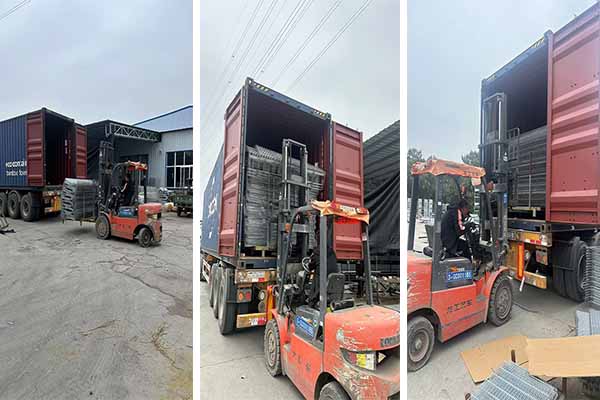Uganda Chicken Farming: Equipment Maintenance Cycle for Efficient Chicken Farming
Time : 2025-04-27
When it comes to chicken farming in Uganda, having the right equipment is crucial. However, maintaining that equipment is equally important. In this article, we’ll delve into the maintenance cycle for chicken farming equipment in Uganda, ensuring that your chicken farm runs smoothly and efficiently. So, let’s dive right in!
Introduction to Chicken Farming Equipment
Before we discuss the maintenance cycle, let’s briefly go over the types of equipment commonly used in chicken farming in Uganda.
1. Brooders: These are used to keep the chicks warm in the initial stages of their lives.
2. Feeders and Drinkers: These provide food and water to the chickens, ensuring they stay hydrated and well-nourished.
3. Ventilation Systems: Proper ventilation is essential to maintain air quality and prevent disease.
4. Roosts and Litters: Roosts allow chickens to rest comfortably, while litters help absorb moisture and keep the floor dry.
The Importance of Equipment Maintenance
Maintaining your chicken farming equipment is crucial for several reasons:
1. Prevents Breakdowns: Regular maintenance can help identify and fix issues before they lead to equipment failure.
2. Enhances Efficiency: Well-maintained equipment operates more efficiently, saving you time and money.
3. Improves Chicken Health: A clean and well-functioning environment reduces the risk of disease and improves the overall health of your chickens.
4. Increases Profitability: By reducing downtime and improving efficiency, you can increase your farm’s profitability.
The Equipment Maintenance Cycle
Now, let’s discuss the maintenance cycle for chicken farming equipment in Uganda. This cycle is typically divided into three stages:
1. Preventive Maintenance
2. Predictive Maintenance
3. Corrective Maintenance
1. Preventive Maintenance
Preventive maintenance is the most crucial aspect of equipment maintenance. It involves regular inspections and maintenance tasks to prevent issues before they occur.
Key Tasks:
– Regular Cleaning: Clean all equipment thoroughly to remove dirt, bacteria, and other contaminants.
– Check for Worn Parts: Inspect equipment for worn-out parts, such as belts, hinges, and bearings, and replace them as needed.
– Grease Moving Parts: Regularly grease moving parts to ensure smooth operation and reduce wear and tear.
– Check Electrical Connections: Inspect all electrical connections for loose or damaged wires and replace them if necessary.
Frequency:
– Daily: Check and clean feeders, drinkers, and water tanks.
– Weekly: Inspect and maintain ventilation systems, roosts, and litters.
– Monthly: Conduct a thorough inspection of all equipment and perform any necessary maintenance tasks.
2. Predictive Maintenance
Predictive maintenance involves using technology and data to predict potential equipment failures before they happen. This can help you avoid unexpected downtime and costly repairs.
Key Tools and Techniques:
– Vibration Analysis: Use vibration analyzers to detect abnormal movements and wear in equipment.
– Oil Analysis: Regularly analyze the oil from motors and other mechanical components to detect any issues.
– Temperature Monitoring: Monitor the temperature of critical equipment to ensure they’re operating within safe limits.
Frequency:
– Quarterly: Perform vibration analysis and oil analysis.
– Annually: Conduct a comprehensive temperature monitoring assessment.
3. Corrective Maintenance
Corrective maintenance is performed when equipment fails. This involves identifying the root cause of the failure and taking appropriate actions to fix it.
Key Tasks:
– Diagnosis: Identify the root cause of the equipment failure.
– Repair or Replacement: Repair the equipment or replace it if it’s no longer cost-effective.
– Documentation: Keep detailed records of the repair process and any changes made to the equipment.
Frequency:
– As Needed: Perform corrective maintenance when equipment fails.
Tips for Successful Equipment Maintenance
To ensure the success of your equipment maintenance cycle, consider the following tips:
1. Develop a Maintenance Schedule: Create a detailed maintenance schedule and stick to it.
2. Train Your Staff: Ensure that your staff is trained on proper maintenance procedures.
3. Keep Records: Keep detailed records of all maintenance tasks, repairs, and replacements.
4. Use High-Quality Parts: Invest in high-quality replacement parts to ensure the longevity of your equipment.
Conclusion
Maintaining your chicken farming equipment in Uganda is crucial for the success of your farm. By following the equipment maintenance cycle and implementing the tips outlined in this article, you can ensure that your equipment runs smoothly and efficiently, ultimately leading to increased profitability and improved chicken health.
Remember, the key to successful chicken farming equipment maintenance is regular inspections, proper care, and timely repairs. By investing in equipment maintenance, you’re investing in the future of your chicken farm.












